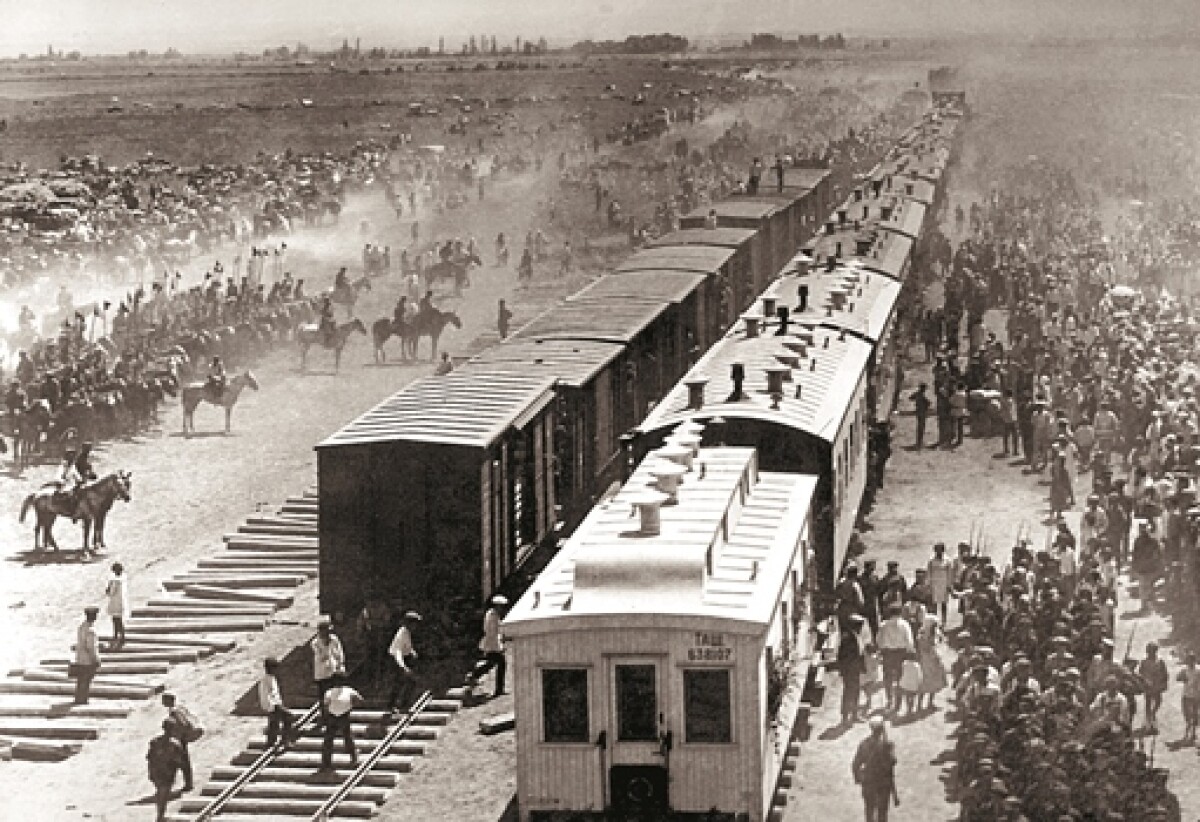
The twentieth century is not accidentally called modern history, because from that time the number of scientific discoveries has increased, new specialties have appeared. In particular, the construction sector has started to develop rapidly in our country, in connection with which there has been a great demand for specialists in this field. In the early twentieth century, construction was intensively developing, and one of the industrial projects was the construction of the Orenburg-Tashkent railway (1901-1906). During the construction of the railway, the number of builders increased sharply. To be precise, in the autumn of 1901 four thousand people worked on the construction of the railway, in the summer of 1902 this number exceeded 17 thousand, and in two years, that is, in 1904, there were already about 30 thousand people working. It should be noted that the bulk of workers came from Russia, while local workers were involved in unskilled workers, including Russians, Kazakhs, Ukrainians, etc.
In percentage terms, it looked like this: in Balmuryn (Kyzylorda Oblast, Shieli District) of 1,500 workers in 1902-1904 the Russians were 6-8%, and the remaining workers 92-94% were of other nationalities. And in the summer of 1905 the Russians were 12-14%, and the remaining workers 85-88% were of other nationalities. According to statistics, in May 1905, the Kazakhs were 31.5%, Karakalpaks - 31.2%, Persians - 19%, Russians - 13.6%, Afghans - 2.5%, Tatars - 1.2%, Caucasians - 1 %. In general, in the midst of construction work, the number of Kazakh workers reached 10-12 thousand people; this is about 30-40%.
.jpg)
Print editions of those years noted that a large flow of workers from outside, which was observed at the beginning of construction, after the time was shortened. You can see the prevalence of local residents, in percentage terms they were 30-40%. It can be said that the Kazakhs took an active part in the construction of the railway.
The average age of workers (Russians?) on the Orenburg-Tashkent railway was 40-45 years (70-75%), while female workers were only 6.4%. The age of Kazakhs and representatives of other nationalities did not exceed 30-35 years, because people over 35 tried not to recruit, referring to their unfitness.
.jpg)
In connection with the construction of the railway, locals began to leave the villages in search of work and began to move to the cities where the railway passed. The number of settlers grew every day, they were called "waste", they wanted to benefit. This phenomenon, in turn, began to change the socio-political thinking of the population. First, the villagers began to look for work, and did not sit at home; we can say that this was a huge rise in the development of new professions. Secondly, a certain part of the population was involved in commodity-money relations. As a result, the common people began to grow cultural level and political consciousness.
.jpg)
The Orenburg-Tashkent railway was the first industrial project, which was of great importance in the economic, social and political life of the country. Of course, there were also negative aspects. Under the pretext of building a railway, Kazakh lands began to be seized, the number of settlers increased, it was necessary to provide them with land, housing, and they were appointed to senior positions. A simple Kazakh could only be a laborer.
In general, thanks to the railway, the format of the society's life has changed, people began to strive forward, receive specialties and master the professions. The quality of cadres has increased, the education of the Kazakh youth in local technical schools has become available, and even in foreign educational institutions, jobs have been opened, people have begun to work. The first working cadres appeared in Kazakhstan. The very poor (jatak) have the opportunity to hire for temporary work, thereby earning their living. Over time, workers have learned to fight for their rights and protect their work.
.jpg)
In the history there were workers who first demanded the introduction of an 8-hour working day. This proves the growth of political consciousness in society. In addition, in 1905-1906 during the First Russian Revolution, Kazakh workers came out with their demands. The demands were heard, although they were not fully executed, but the authorities had to reckon with their opinion. The number of people wishing to get education increased, especially the special secondary education. A graduate employment center was established and a committee for their registration was established.
Prior to the February Revolution, the number of graduates arranged for work, compared with the indicators of the late XIX century increased by 12%. At the height of the February and October Revolution of 1917, the proportion of constantly working Kazakhs at the stations and outposts of the Togyzsapak branch of the Orenburg-Tashkent railway was 2-3%, and the share of wage-workers was 70%. And these figures are only by rail.
Personnel issues can not be solved at the same time, but one can say that the construction of the railway pushed society to increase their education and the emergence of new specialties.
Translated by Raushan MAKHMETZHANOVA
